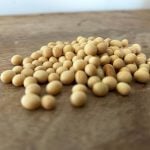
Tag Archives Lake Winnipeg

Aquatic invasive species training sessions held in Manitoba
Everyone needs to be aware and help protect our water bodies

DIVIDED OVER WATER: Outlet channels spark controversy
Farmers on the south end of Lake Manitoba support the proposed channels to save their land from flooding, but the projects will slice through the farms of dozens of north-shore farmers who worry they won’t be adequately compensated

CDs cite need for multi-benefit water control projects
Flood preparations alone won’t buy a litre of drought protection, say MCDA speakers

Lake Winnipeg blooms create neurotoxins
Researchers say the substances have been associated with several health conditions

Bill 24 to allow new hog barns
A diverse group of individuals and organizations spend two nights making the case for and against the hog industry

4-H’ers dig into soil health policy and education
Soil health was a repeat topic as 4-H members from around the world turned their attention to sustainable agriculture and food security

New report paints dire picture of Canadian freshwater systems
Watershed Report is a first-time assessment of all 25 of Canada’s watersheds

Conservation district holds a water festival
Erosion, water patterns and pollution were among the themes explored at Brandon’s first water festival
Editorial: Pigs and protests

Proposed changes fuel return of advocacy group
Hog Watch is back and fearful that proposed changes to environmental regulations could do serious damage to Manitoba waterways


